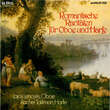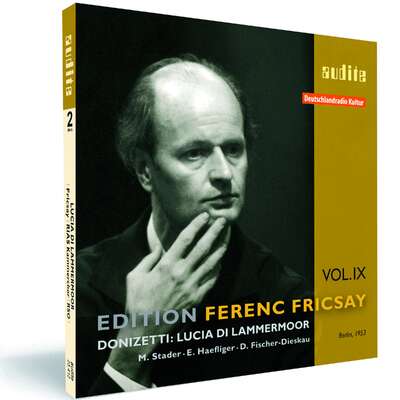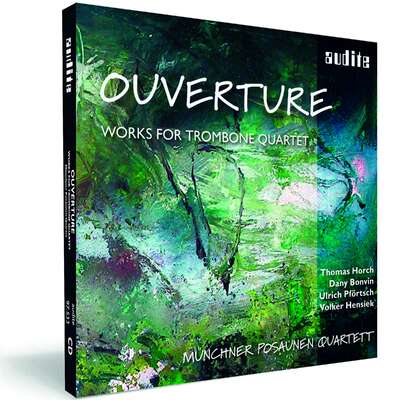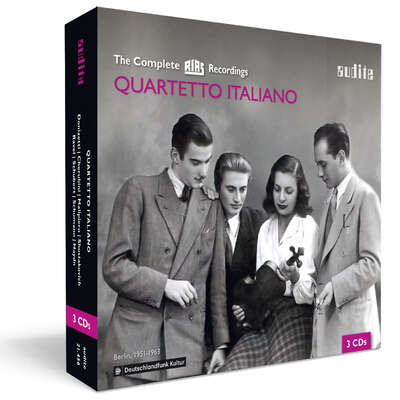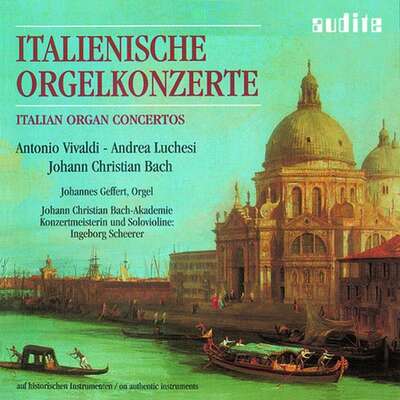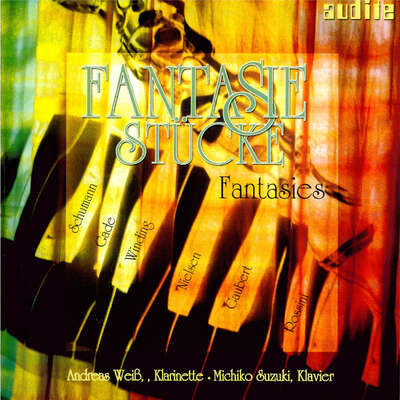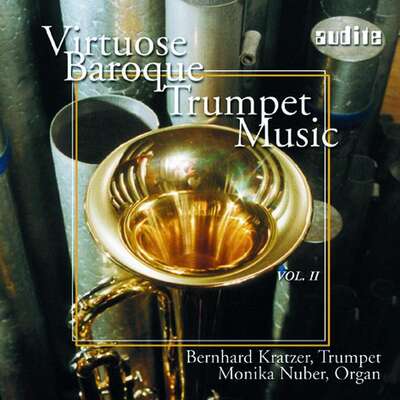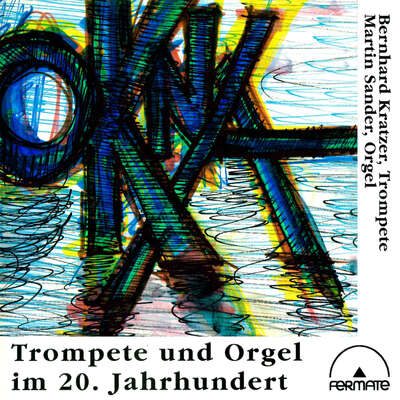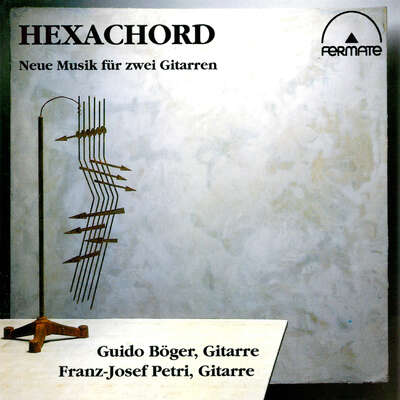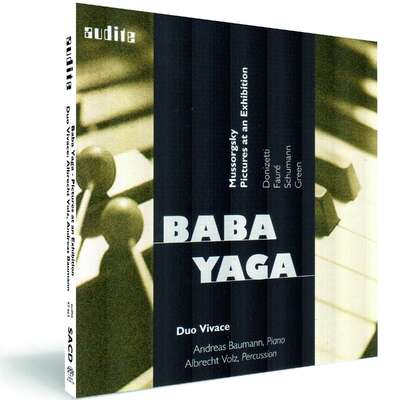
Gaetano Donizetti | Robert Nicolas Charles Bochsa | Henri Brod | Antonio Pasculli
"Romantische, opernnahe Salonstücke, ...beseelt, sehr klangschön und in den virtuosen Passagen brillant dargeboten: Die Platte ist eine anmutige Kostbarkeit." (Fono Forum)
Details
| Romantic Rarities for Oboe and Harp | |
| article number: | 91.402 |
|---|---|
| EAN barcode: | 4009410914026 |
| price group: | BCH |
| release date: | 1. January 1990 |
| total time: | 33 min. |
Reviews
www.musicweb-international.com | January 2004 | Robert Hugill | January 1, 2004
The romantic composers did not do very well by the oboe, so a disc of 19th century music for oboe and harp must, of necessity, cast its net ratherMehr lesen
The romantic composers did not do very well by the oboe, so a disc of 19th century music for oboe and harp must, of necessity, cast its net rather wide. For this disk the principal oboe of the Stuttgart Radio Symphony Orchestra performs a rather slight piece by Donizetti alongside more substantial pieces by lesser known composers – Frenchmen Robert Nicolas Charles Bochsa and Henri Brod and Italian Antonio Pasculli. Not surprisingly both Pasculli and Brod were oboe virtuosi and Bochsa was a harp virtuoso and son of an oboe player, so writing for the instrument was almost inevitable in each case.
Donizetti’s Andante Sostenuto is a charming miniature, a cantabile cavatina that emulates an operatic aria. But it leaves one feeling a little unsatisfied, wishing the cavatina had had its cabaletta as well.
Bochsa’s father was both an oboist and a music publisher. Bochsa himself became Royal harpist in 1813 and managed to maintain his position even after the return of the Bourbons. Dodgy business deals seem to have forced him to flee to England where he was a teacher and soloist. In 1839 he ran away with the wife of the conductor Bishop and the wayward pair led a vagrant life, Bochsa eventually dying in Australia. Amongst the many concert works that he wrote are the Three Nocturnes Opus 50 for harp and oboe. The piece is rather like an operatic pot-pourri, though some of the themes are explored in a sequence of variations.
Henri Brod seems to have been a far more sedate figure. Younger than Bochsa, he died at the early age of 37. He was a teacher at the Paris Conservatory, a famous oboe virtuoso and author of the ‘Grande méthode complète pour le hautbois’. He wrote two Nocturnes for piano (or harp) and oboe. The emotional Introduction is followed by an attractive theme and variations including a variation using the theme from the introduction in a minor key. The piece ends with a waltz.
Pasculli was born in Palermo. He taught oboe and cor anglais as well as appearing as a virtuoso all over Italy. He seems to have written many fantasies on the popular Italian and French operas of his day and this Homage to Bellini includes themes from ‘Il Pirata’ and ‘La Sonnambula’. The use of cor anglais gives a welcome change of timbre, though the form of the Homage is essentially another pot-pourri.
The Donizetti piece opens with a long-breathed cantabile theme for the oboe, supported by arpeggios in the harp. This basic texture is repeated throughout all of the pieces on the disc. The music generally lacks development; where a theme is explored it is usually through a sequence of variations. This combined with the rather similar texture of the pieces means that the basic musical material is slight, though charming, and can lack variety. In such cases, the performers’ ability to add colouration and depth is important. Lencses makes a wonderfully rich and mellifluous sound on both the oboe and cor anglais, but both he and Talitman play with a rather unvarying tone. Though talented and possessed of fine techniques, they don’t quite present the pieces in the best light possible.
This is a charming record of admittedly slight musical material. Admirers of this genre or this combination of instruments should have not trouble enjoying it.
Donizetti’s Andante Sostenuto is a charming miniature, a cantabile cavatina that emulates an operatic aria. But it leaves one feeling a little unsatisfied, wishing the cavatina had had its cabaletta as well.
Bochsa’s father was both an oboist and a music publisher. Bochsa himself became Royal harpist in 1813 and managed to maintain his position even after the return of the Bourbons. Dodgy business deals seem to have forced him to flee to England where he was a teacher and soloist. In 1839 he ran away with the wife of the conductor Bishop and the wayward pair led a vagrant life, Bochsa eventually dying in Australia. Amongst the many concert works that he wrote are the Three Nocturnes Opus 50 for harp and oboe. The piece is rather like an operatic pot-pourri, though some of the themes are explored in a sequence of variations.
Henri Brod seems to have been a far more sedate figure. Younger than Bochsa, he died at the early age of 37. He was a teacher at the Paris Conservatory, a famous oboe virtuoso and author of the ‘Grande méthode complète pour le hautbois’. He wrote two Nocturnes for piano (or harp) and oboe. The emotional Introduction is followed by an attractive theme and variations including a variation using the theme from the introduction in a minor key. The piece ends with a waltz.
Pasculli was born in Palermo. He taught oboe and cor anglais as well as appearing as a virtuoso all over Italy. He seems to have written many fantasies on the popular Italian and French operas of his day and this Homage to Bellini includes themes from ‘Il Pirata’ and ‘La Sonnambula’. The use of cor anglais gives a welcome change of timbre, though the form of the Homage is essentially another pot-pourri.
The Donizetti piece opens with a long-breathed cantabile theme for the oboe, supported by arpeggios in the harp. This basic texture is repeated throughout all of the pieces on the disc. The music generally lacks development; where a theme is explored it is usually through a sequence of variations. This combined with the rather similar texture of the pieces means that the basic musical material is slight, though charming, and can lack variety. In such cases, the performers’ ability to add colouration and depth is important. Lencses makes a wonderfully rich and mellifluous sound on both the oboe and cor anglais, but both he and Talitman play with a rather unvarying tone. Though talented and possessed of fine techniques, they don’t quite present the pieces in the best light possible.
This is a charming record of admittedly slight musical material. Admirers of this genre or this combination of instruments should have not trouble enjoying it.
The romantic composers did not do very well by the oboe, so a disc of 19th century music for oboe and harp must, of necessity, cast its net rather
